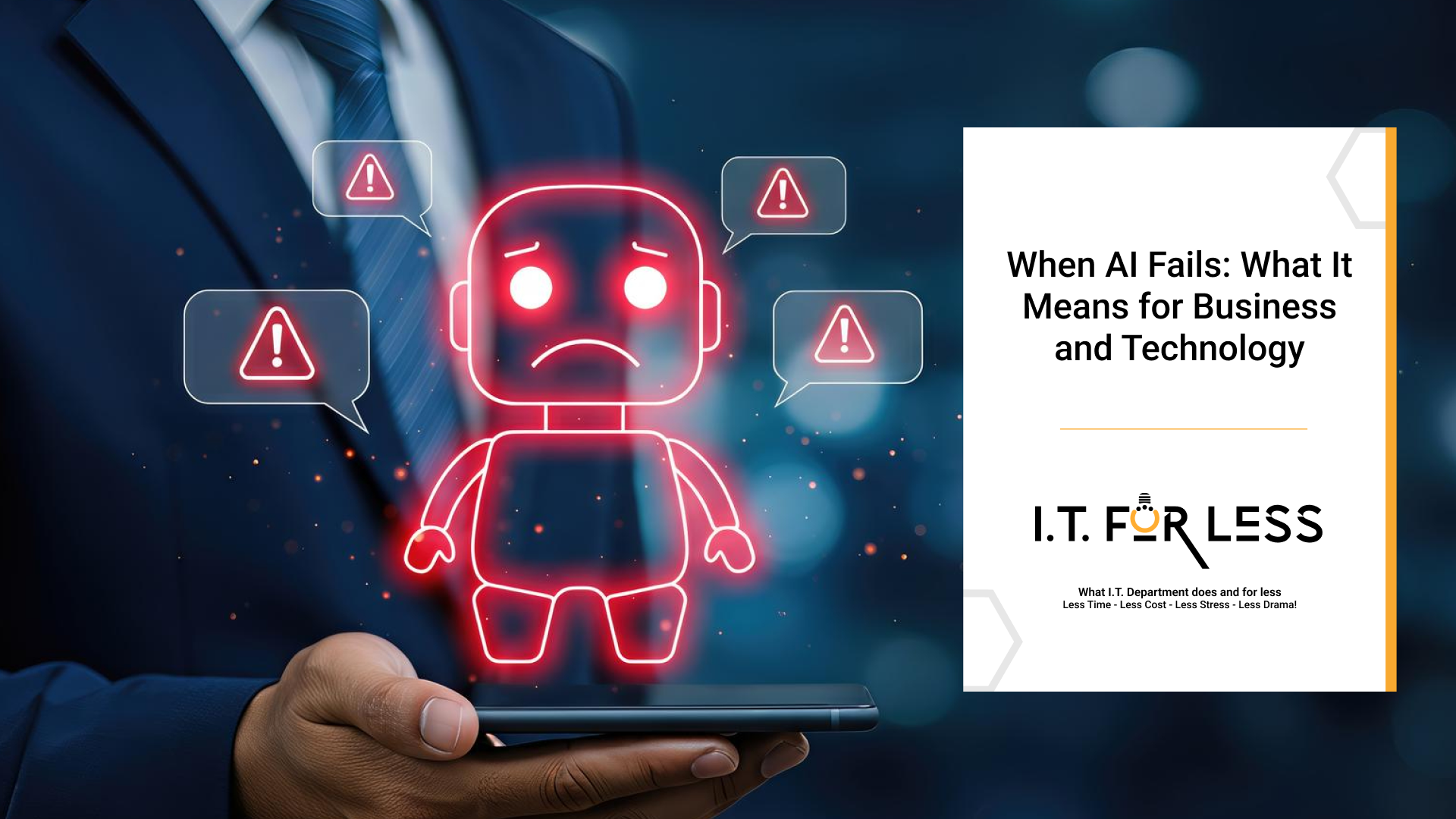Artificial intelligence has become central to modern innovation — powering automation, decision-making, and customer engagement across industries. But while AI drives efficiency and competitive advantage, it is not infallible. AI can fail — sometimes subtly, sometimes dramatically — and when it does, the consequences can impact operations, security, reputation, and trust. When AI fails, what it means for business and technology goes beyond immediate issues, affecting long-term planning and adaptation.
Understanding AI failure isn’t about fear — it’s about preparedness. Let’s break down why AI fails and what it means for organizations relying on it.
Why AI Fails
1. Biased or Poor-Quality Data
AI is only as good as the data it learns from. Incomplete, inaccurate, or biased datasets lead to unreliable results, causing unfair decisions, flawed predictions, or operational disruption. This issue becomes even more pronounced at scale, where biased outcomes can affect thousands of users or transactions.
2. Model Limitations
Even advanced models have blind spots. AI struggles with context, nuance, and uncommon scenarios — especially those it hasn’t been trained on. As a result, unexpected real-world conditions can confuse AI systems and trigger incorrect decisions.
3. System Integrations and Complexity
AI systems rarely operate alone; they depend on data pipelines, IT infrastructure, and third-party tools. Misconfigured systems, poor deployment practices, or integration errors can cause AI tools to malfunction or misinterpret information — making reliability and governance essential.
4. Adversarial Attacks
Cybercriminals can manipulate inputs to deceive AI models — especially in security, finance, and healthcare environments. Attackers understand AI weaknesses, and targeted manipulation can cause systems to misclassify data, bypass controls, or expose sensitive information.
Business Implications of AI Failure
Operational Disruptions
From supply chains to financial approvals, AI errors can halt workflows and slow business performance, affecting productivity and customer service delivery.
Compliance and Legal Risks
Incorrect automated decisions can lead to regulatory issues, fines, or legal challenges. This is especially critical in industries like healthcare, finance, and public services where compliance standards are strict.
Loss of Trust
Customers and stakeholders lose confidence when AI-powered decisions seem unfair or inaccurate. Restoring trust after a high-profile AI failure can be far more difficult than deploying the AI system in the first place.
Financial Loss
Errors can lead to costly remediation, downtime, or missed opportunities. Organizations may need to re-train models, rebuild systems, or compensate impacted users — expenses that quickly add up.
How Businesses Can Prepare
Establish Human-in-the-Loop Oversight
Use AI to support — not replace — expert judgment in critical decisions. Human oversight ensures accountability, accuracy, and ethical decision-making.
Build Transparent, Auditable AI Workflows
Monitor and document model behavior to detect anomalies early. Clear visibility into how models make decisions reduces risk and strengthens governance.
Prioritize Strong Data Governance and Security
Ensure clean, unbiased data and protect AI systems from manipulation. Data quality controls, encryption, and access policies are critical defense layers.
Test and Stress-Simulate Your AI Models
Train AI for edge cases and real-world unpredictability, not just ideal scenarios. Controlled stress testing builds confidence and resilience before deployment.
Conclusion
AI failure isn’t a doom scenario — it’s a reminder that AI is a tool, not a cure-all. The organizations that succeed in the AI era won’t be those that deploy the most automation, but those who build responsible, resilient, and well-governed AI systems supported by skilled human judgment.
Smart businesses don’t just adopt AI — they prepare for when it gets things wrong, ensuring reliability and trust at every stage of innovation.
Partner with I.T. For Less today and take the first step toward building an AI strategy that supports innovation while keeping your business secure, agile, and future-ready.
